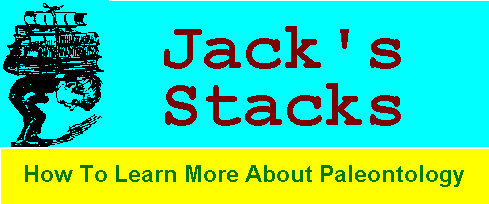
Changing the Image of Mankind

Thus far, all of the reviews in this series have dealt with the main areas of our mutual interest, paleontology. For a change of pace, I'll look at a sub-specialty of paleontology, paleoanthropology, by reviewing The Neandertals by Erik Trinkaus and Pat Shipman, Alfred A. Knopf, 1993. Just for the record, this 454 page volume retails at $30.00.
Erik Trinkaus is Professor of Anthropology at the University of New Mexico, and is recognized as a leading authority on Neandertals. His coauthor, Pat Shipman, is an Associate Professor at John Hopkins University School of Medicine.
I must begin with a note on pronunciation and spelling as explained on the first page of the Prologue. The correct current spelling is: Neandertal, although it was originally Neanderthal. The date for the change was not given but I have the impression it was not done recently. The change was made to modernize German spelling to reflect the pronunciation: both tal and thal are both pronounced like the English word "tall". Interestingly, the Neander Valley, Neander Tal in German, was named after a popular vicar who had changed his surname from Neumann to Neander, Greek for "new man." Consequently, Neander Tal, translates to "new man valley." A quite fitting name for the place a new type of man was found. So, even if you never read the book, you can impress your friends with this story.
The subject matter of The Neandertals should be obvious from the title. The subtitle, Changing the Image of Mankind, may give one second thoughts. The book is not a series of lengthy technical descriptions of bones and famous cave sites. It is written for those amongst the general public with interest in human origins, specifically, those curious about the Neandertals and their relationship to modern humans. This is a well written story, easily read, which keeps your interest throughout.
I used the word "story" above intentionally. The book presents the story of the Neandertals from initial discovery in a cave quarry in the Neander Valley in 1856, through present day finds and re-interpretations. The text is presented chronologically, beginning with the first discovery and initial analysis.
Before the actual text begins, a ten page listing, "Cast of Characters," is presented. This list briefly explains who the individual people involved in the Neandertal story are. It provides a good ready reference during the course of reading.
You could think of this as a history book of sorts. Each chapter presents a different era in history, each era differing from the last in years and societal thinking. Discovery and concurrent analysis is presented in historical and social context. Brief biographical sketches are given for each person involved. All of this information is necessary to the understanding of the analysis made of the fossils. This technique will be familiar to Stephen Jay Gould fans: our predecessors should not be viewed as less intelligent than ourselves because our modern interpretations are "right" and theirs now proven to be wrong; each must be viewed in its historical context to appreciate the biasing effect of societal thinking upon the interpretations.
Although the Neandertals are the subject of the book, discoveries of other homonid fossils are involved as well so that this can be looked at as a good summary of paleoanthropology in general. Piltdown, Eoanthropus dawsoni, and other famous hoaxes are included to further understanding of the personalities and the times. Java Man, Peking Man (both now Homo erectus), and the Taung child (Australopithecus africanus) are discussed as well.
Later chapters cover mitochondrial DNA work including the popularized "Eve" theory of African origins. Since becoming a hit with the press and public, this theory has not found universal acceptance in scientific circles for numerous reasons discussed in the text. Fossil evidence for migrations and origins is also presented along with its limitations.
The Neandertals contains the latest information from the paleoanthropologists currently working with the fossils. This, of course, includes the authors' analysis of the Neandertals' identity, kinship, and nature. Did modern humans evolve from Neandertals? Did early modern humans interbreed with Neandertals? Were they human? Did they have articulate speech? Is there evidence of religious belief amongst them? With a cranial capacity equal to modern humans, were they intelligent? All of these issues are addressed. You may find the answers illuminating and discover the meaning of the subtitle in the process.